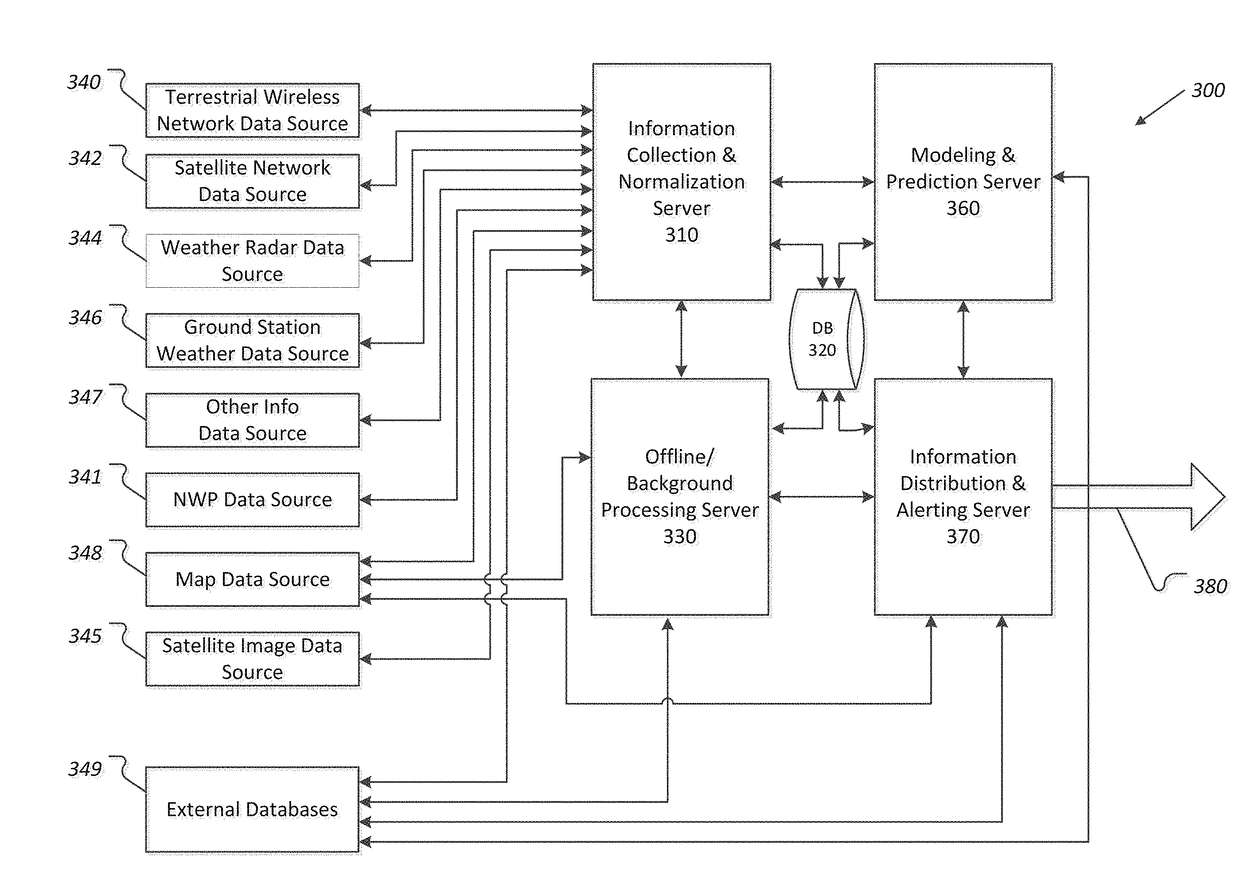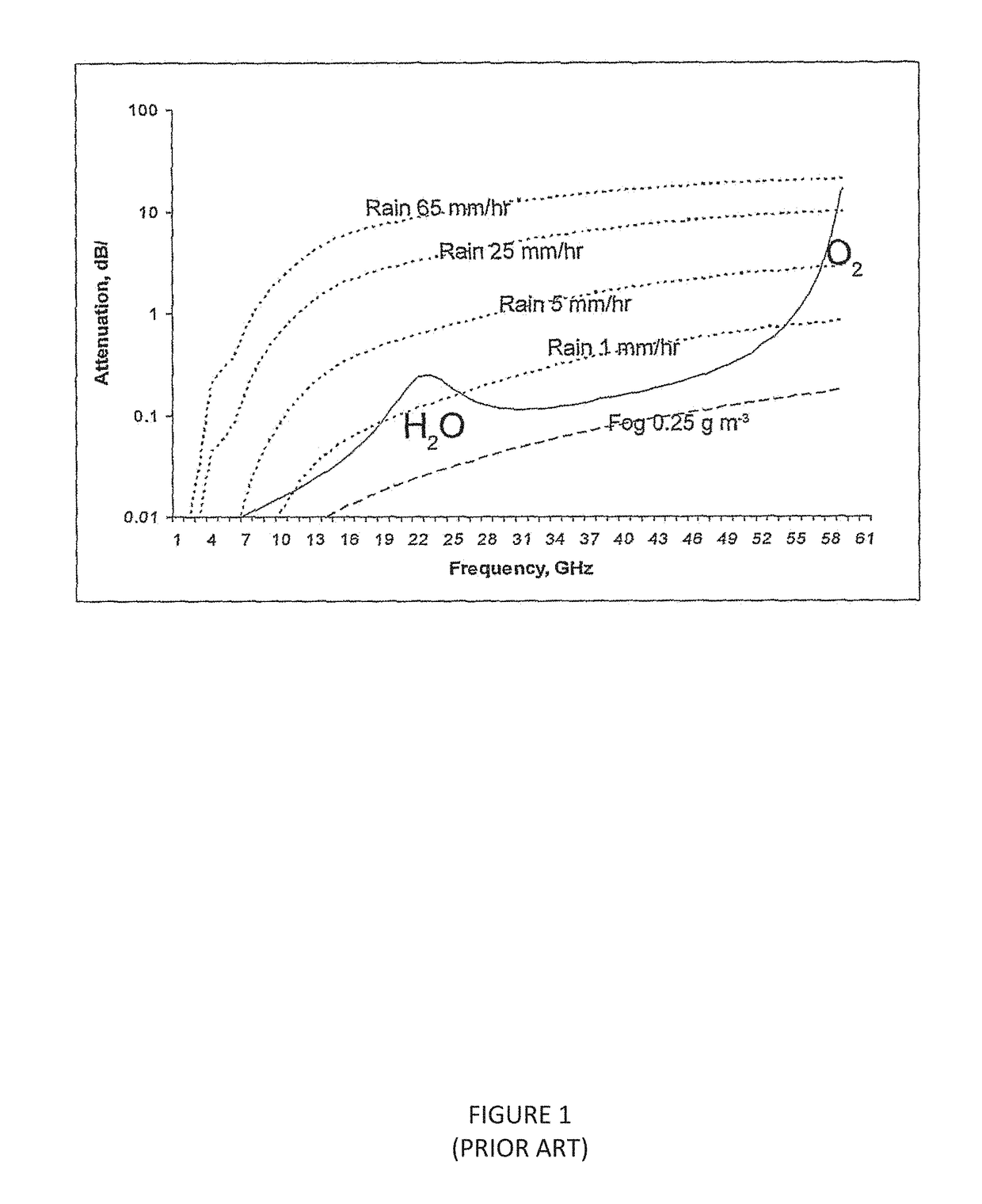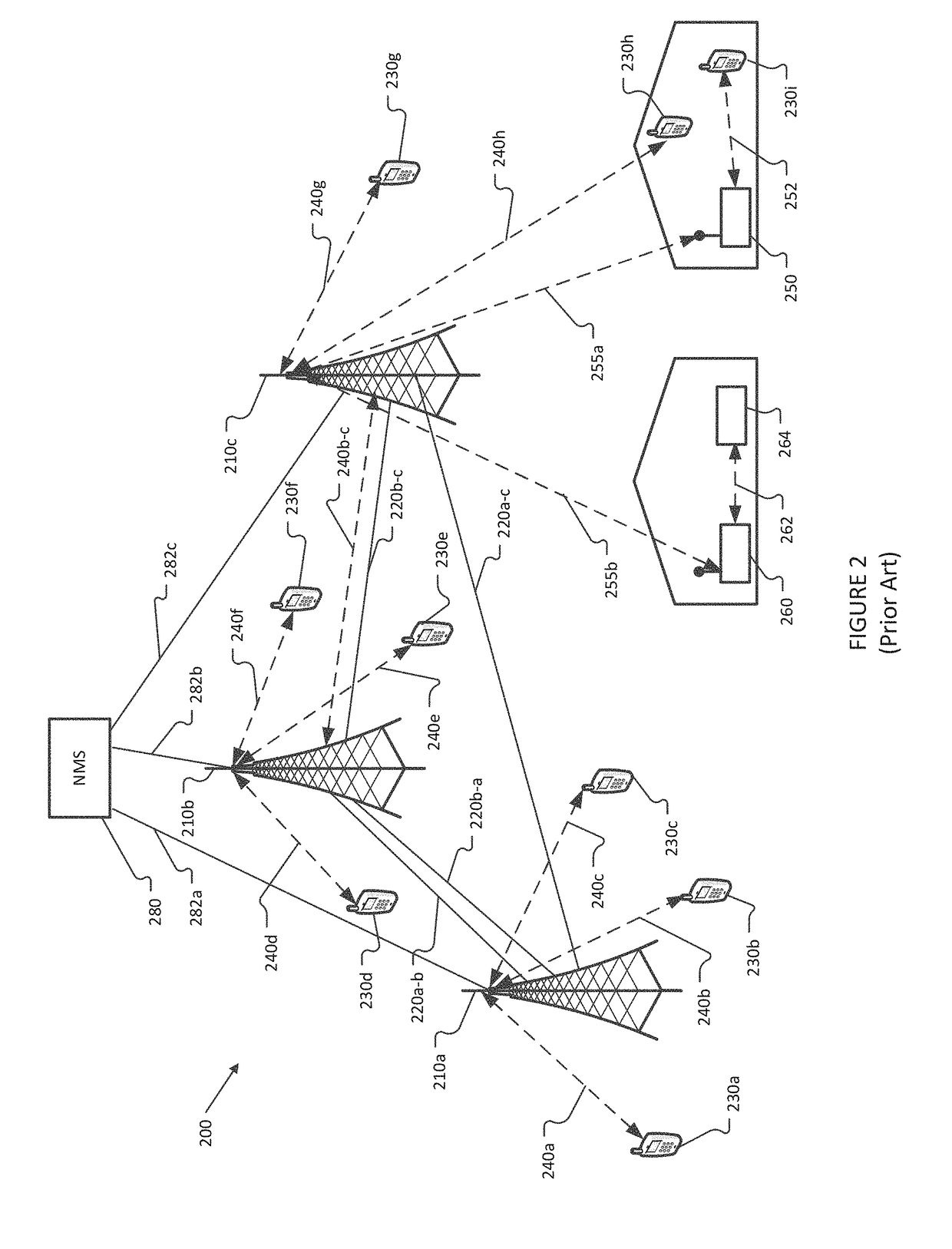Real-Time Precipitation Forecasting System
a real-time precipitation and forecasting technology, applied in the direction of ict adaptation, using reradiation, instruments, etc., can solve the problems of inability to effectively use real-time (or near-real-time) production systems, algorithms used in these attempts are too computationally intensive to complete calculations in a timely manner
- Summary
- Abstract
- Description
- Claims
- Application Information
AI Technical Summary
Benefits of technology
Problems solved by technology
Method used
Image
Examples
Embodiment Construction
6.1 Overview
[0080]The systems and methods described herein provide a mechanism for collecting information from a diverse suite of sensors and systems, calculating the current precipitation and other atmospheric-based phenomena based upon these sensor readings, and predicting future precipitation and atmospheric-based phenomena. Unlike current systems, the described system and methods provide improved data collection and augmentation, dynamically updated data sets, significant accuracy improvements, and real-time projections.
[0081]“Real time” meteorology equipment, such as weather radar, provides precipitation maps showing precipitation intensities and locations on a short time interval, e.g., less than a fifteen minute interval, or optionally less than a five minute interval, or optionally a one minute interval or thereabout. Weather radar signals attenuate when passing through precipitation, so the precipitation maps derived from weather radar have known limitations as the signal i...
PUM
 Login to View More
Login to View More Abstract
Description
Claims
Application Information
 Login to View More
Login to View More - R&D
- Intellectual Property
- Life Sciences
- Materials
- Tech Scout
- Unparalleled Data Quality
- Higher Quality Content
- 60% Fewer Hallucinations
Browse by: Latest US Patents, China's latest patents, Technical Efficacy Thesaurus, Application Domain, Technology Topic, Popular Technical Reports.
© 2025 PatSnap. All rights reserved.Legal|Privacy policy|Modern Slavery Act Transparency Statement|Sitemap|About US| Contact US: help@patsnap.com



